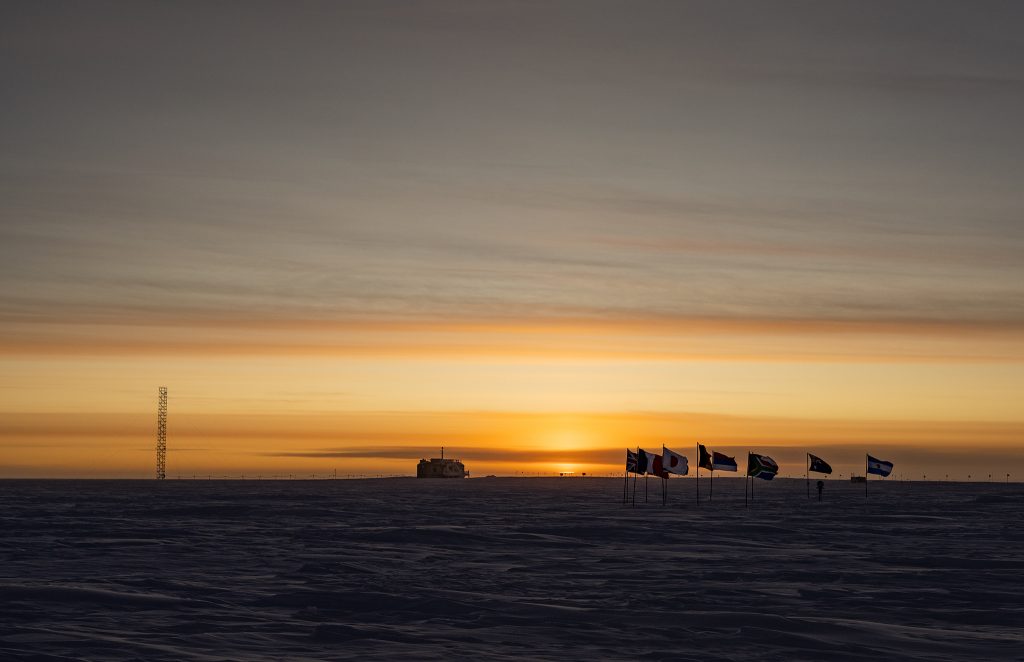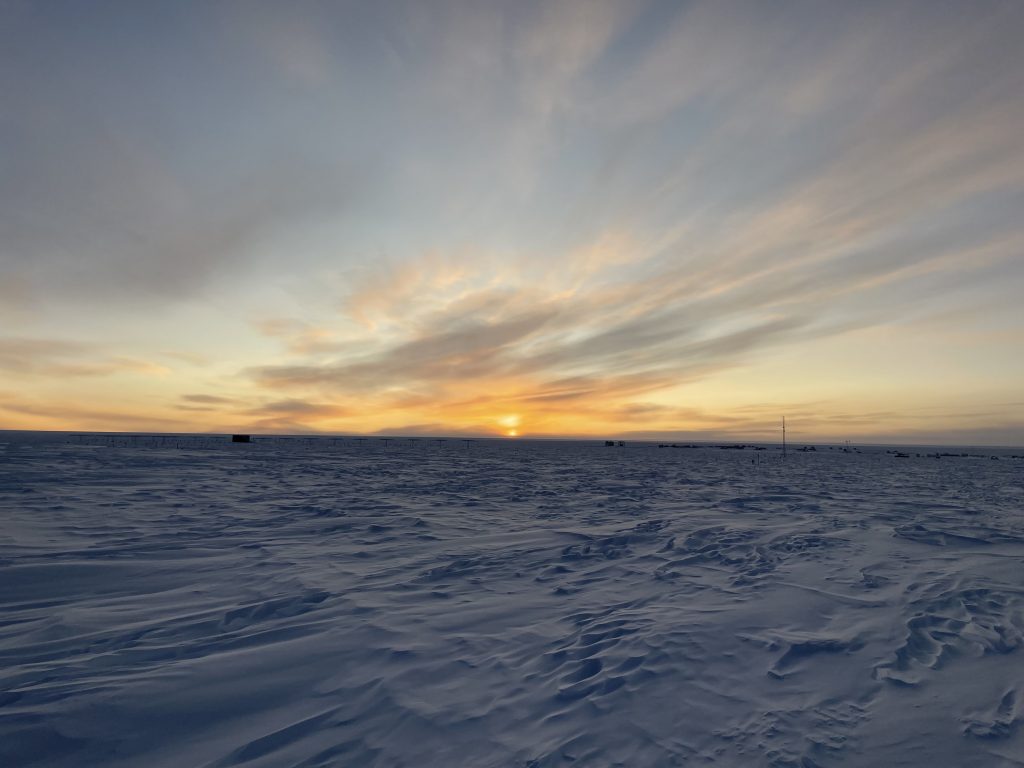
By Patrick Cullis, CIRES and NOAA scientist
After six straight months of darkness, the Sun has finally returned to the sky above the Amundsen-Scott South Pole Station. NOAA scientists working at the station and collecting air samples at the Atmospheric Research Observatory (ARO) experience only one sunrise and one sunset per year due to the unique location of the South Pole on Earth’s axis.
As seen in this incredible timelapse video by Aman Chokshi from the University of Melbourne (at the South Pole working with a giant radio telescope), the Sun travels horizontally to the horizon at the South Pole, with the only vertical movement a result of Earth’s year-long orbit around the Sun.
Along with the return of sunlight above the South Pole and Antarctica, the ozone hole reappears. In the stratosphere, sunlight activates a buildup of chlorine that destroys much of the protective ozone overhead. During the ozone depletion season, NOAA scientists ramp up their measurements in a government-mandated mission to monitor the health of the ozone layer.


